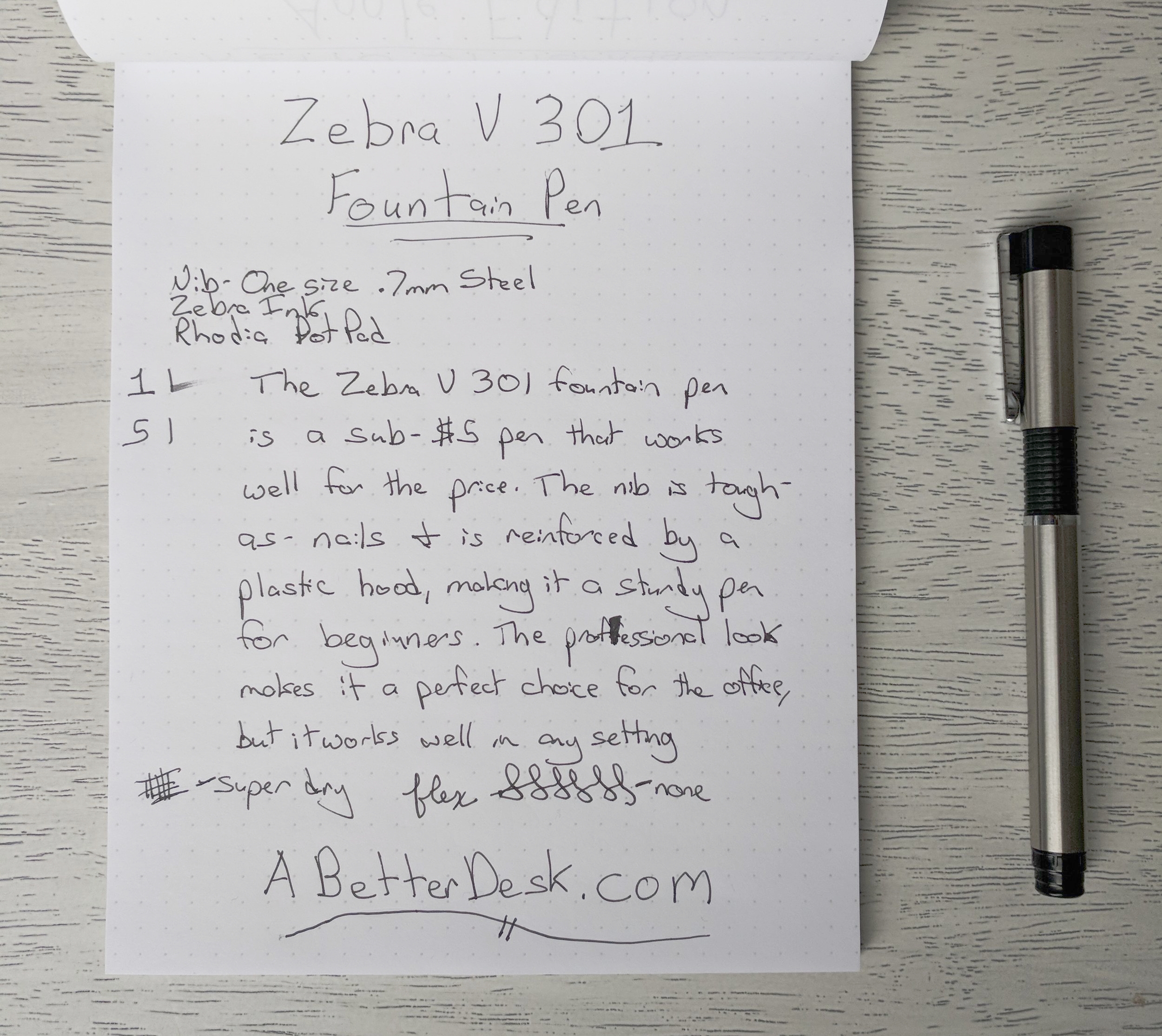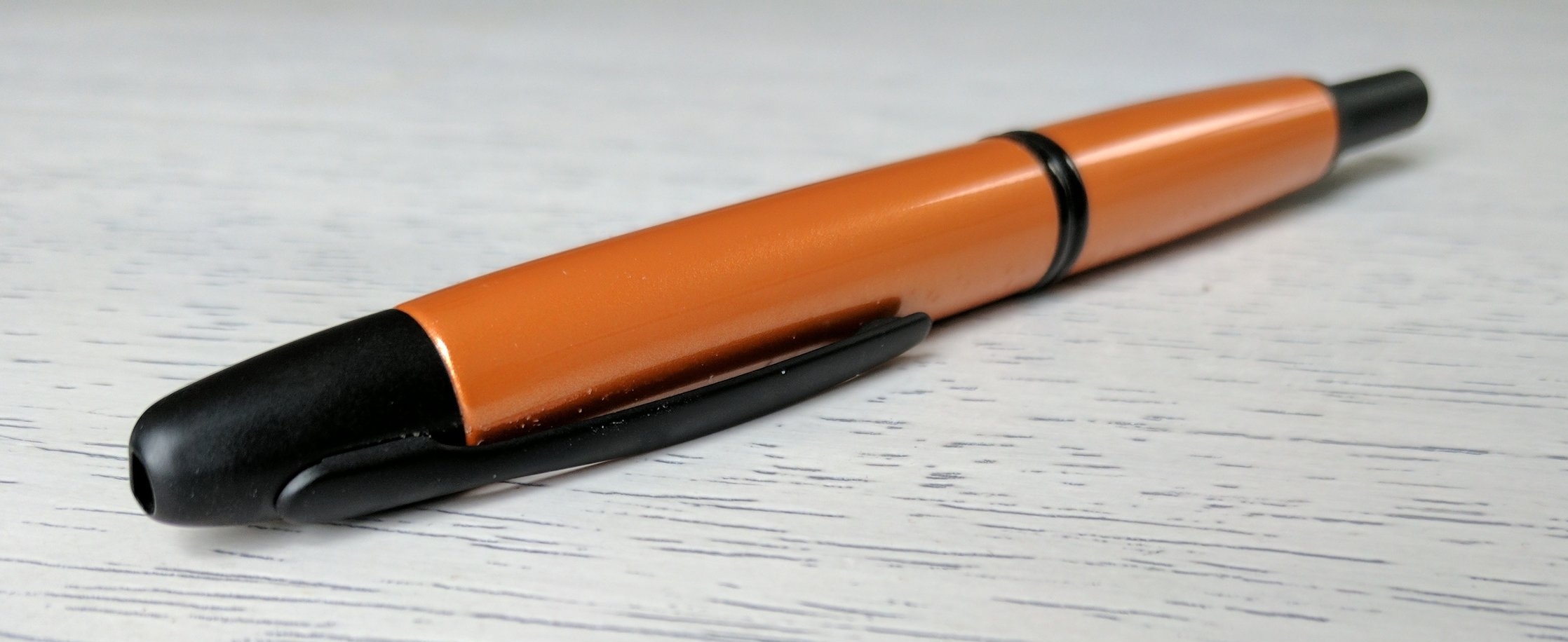Zebra V-301 Fountain Pen Review
Interested in fountain pens but not sure where to start? There are plenty of pens that can be had for less than $20, but what about those ultra-affordable sub-$5 pens. The Zebra V-301 Fountain Pen is one such pen. How does it hold up against the likes of its low-price counterparts? Read on to find out.
Those who use Zebra V-301 Series pens and pencils will be right at home with the fountain pen version. Aesthetically, the pen shares a similar design style, including black plastic grip. The ridges on the grip make the Zebra V-301 comfortable to hold for longer writing sessions, although the matte plastic is less appealing to the eye than the smooth plastic grips on pens like the Pilot Metropolitan. Still, it's a worthy tradeoff for sweaty fingers and cramped hands. For those looking to try an ultra-affordable fountain pen in the office, it's hard to recommend the Platinum Preppy, which looks as if it belongs in a high schooler's backpack, rather than a briefcase. The Zebra V-301, on the other hand, has a professional look that would fit right in, in an office environment.
Two critical pieces of a fountain pen cap design are the way that the cap fits securely on the pen body and how the cap posts for writing. Overall, the Zebra V-301 posts nicely, with a solid click, but its capping experience leaves something to be desired. It does cap securely, so there's no need to fear a dry nib or ink-stained pants, but I found the Zebra V-301 occasionally difficult to cap. This seemed to get better with time, perhaps as the cap and plastic grip became worn in.
One of the most interesting features of the Zebra V-301 is its hooded nib. One of the downsides of some ultra-affordable pens, such as the Platinum Preppy, is their flexible nibs, which can be easily damaged by heavy-handed fountain pen novices. The Zebra V-301, on the other hand, has a plastic hood that reinforces the back of the steel nib. The nib itself is hard-as-nails and offers very little flex. This might be a turnoff to some but offers great protection from accidental damage.
The logo should be face-up, which is a small design flaw.
The writing experience with the Zebra V-301 was surprisingly pleasant for a pen at its price point. The nib does run on the dry/scratchy side, and some online reviews did mention skips and clogs, but I used the pen as my daily driver for a week and didn't experience any major issues. Like the hood on the Lamy 2000, the hood on the Zebra 301 can obsure the view of the nib, making it more difficult to tell when the pen is at the appropriate writing angle. My guess is that this is somewhat responsible for the reviews that mention skips. I did notice a few skips after using the pen for extended periods, but I experience the same issues when using more expensive starter pens, like the Lamy Vista.
It's impossible to ignore price when considering the quality of a fountain pen. The Zebra V-301 is far from perfect, but for an average price of $3, it performs substantially well, even when compared to the Platinum Preppy. The reinforced nib makes it an excellent choice for fountain pen beginners, and the generous double ink refill will ensure that you'll have plenty of ink to put it through its paces.
This pen was provided at no cost by For My Desk, for the purposes of this review. If you're interest in the Zebra V-301 Fountain Pen, check it out on their site!
Like this post? Subscribe to our rss feed or follow us on Twitter and receive new post updates automatically.




























